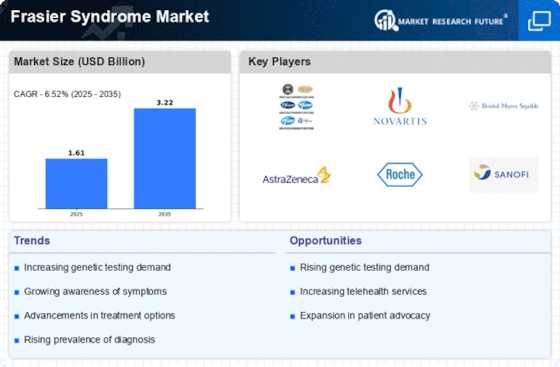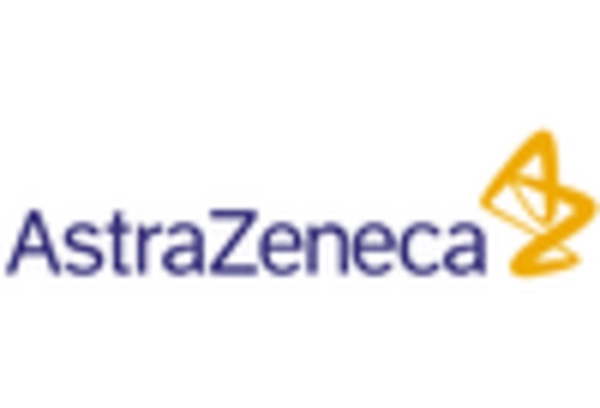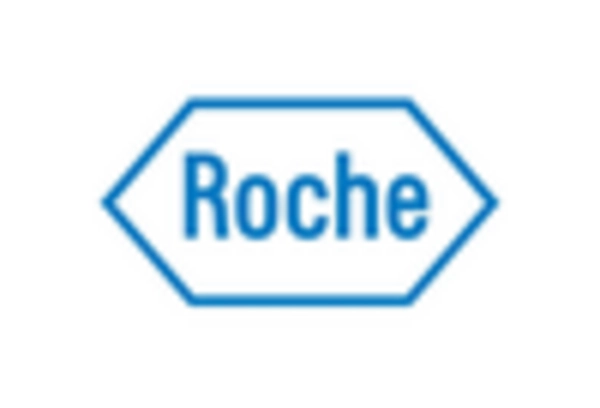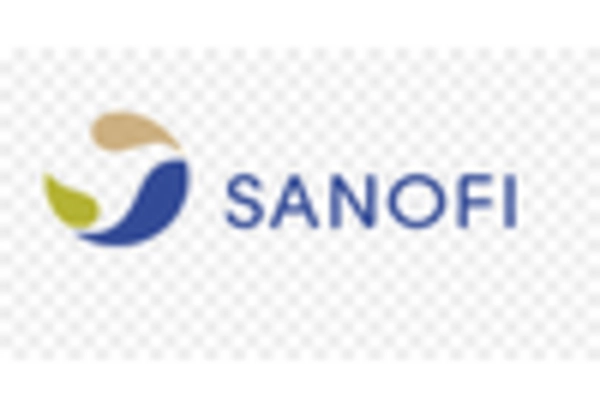Rising Awareness of Genetic Disorders
The increasing awareness of genetic disorders, including Frasier Syndrome Market, is a pivotal driver in the Frasier Syndrome Market. As healthcare professionals and the general public become more informed about the implications of genetic conditions, the demand for diagnostic testing and treatment options rises. This heightened awareness is reflected in the growing number of genetic counseling services and educational programs aimed at both patients and healthcare providers. Consequently, the Frasier Syndrome Market is likely to experience a surge in demand for genetic testing and personalized treatment plans, as individuals seek to understand their genetic predispositions and available interventions. Furthermore, the integration of genetic education into medical curricula may enhance the capabilities of healthcare providers, thereby fostering a more informed approach to managing genetic disorders.
Advancements in Genetic Testing Technologies
Technological advancements in genetic testing are transforming the Frasier Syndrome Market. Innovations such as next-generation sequencing (NGS) and CRISPR gene editing are enabling more accurate and efficient diagnosis of genetic disorders. These technologies not only enhance the precision of genetic testing but also reduce the time required for results, which is crucial for timely intervention. The market for genetic testing is projected to grow significantly, with estimates suggesting a compound annual growth rate of over 10% in the coming years. As testing becomes more accessible and affordable, the Frasier Syndrome Market is poised to benefit from an influx of patients seeking genetic evaluations. This trend may also encourage pharmaceutical companies to invest in research and development of targeted therapies, further expanding the market landscape.
Increased Investment in Rare Disease Research
The Frasier Syndrome Market is witnessing a notable increase in investment directed towards rare disease research. Governments and private organizations are recognizing the need for focused research on conditions like Frasier Syndrome Market, which affects a small population but has profound implications for those diagnosed. Funding initiatives aimed at rare diseases are becoming more prevalent, with substantial grants being allocated to research institutions and biotech companies. This influx of capital is likely to accelerate the development of novel therapies and treatment protocols, thereby enhancing the overall market for Frasier Syndrome Market. Additionally, collaborations between academic institutions and pharmaceutical companies are expected to yield innovative solutions, further driving growth in the Frasier Syndrome Market.
Collaborative Efforts in Research and Development
Collaborative efforts among various stakeholders are emerging as a crucial driver in the Frasier Syndrome Market. Partnerships between academic institutions, healthcare providers, and pharmaceutical companies are fostering an environment conducive to innovation and discovery. These collaborations often lead to shared resources, knowledge, and expertise, which can accelerate the development of new diagnostic tools and therapies for Frasier Syndrome Market. Furthermore, joint research initiatives may enhance the understanding of the genetic mechanisms underlying the condition, paving the way for more effective treatments. As these collaborative efforts gain momentum, the Frasier Syndrome Market is likely to benefit from a more robust pipeline of therapeutic options, ultimately improving patient outcomes and advancing the field of genetic medicine.
Growing Demand for Personalized Treatment Options
The shift towards personalized medicine is significantly influencing the Frasier Syndrome Market. Patients increasingly seek tailored treatment plans that consider their unique genetic profiles and health conditions. This trend is particularly relevant for genetic disorders like Frasier Syndrome Market, where individualized approaches can lead to better health outcomes. The market is responding to this demand by developing targeted therapies and personalized treatment regimens that align with patients' specific needs. As healthcare systems adopt more patient-centered models, the Frasier Syndrome Market is likely to expand, with a focus on delivering customized care that enhances patient satisfaction and treatment efficacy. This evolution in treatment paradigms may also encourage further research into the genetic underpinnings of Frasier Syndrome Market, fostering a deeper understanding of the condition.


















Leave a Comment